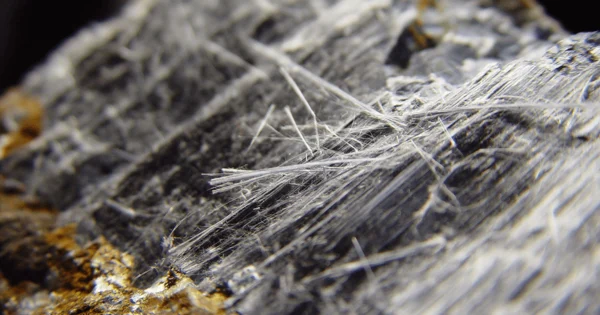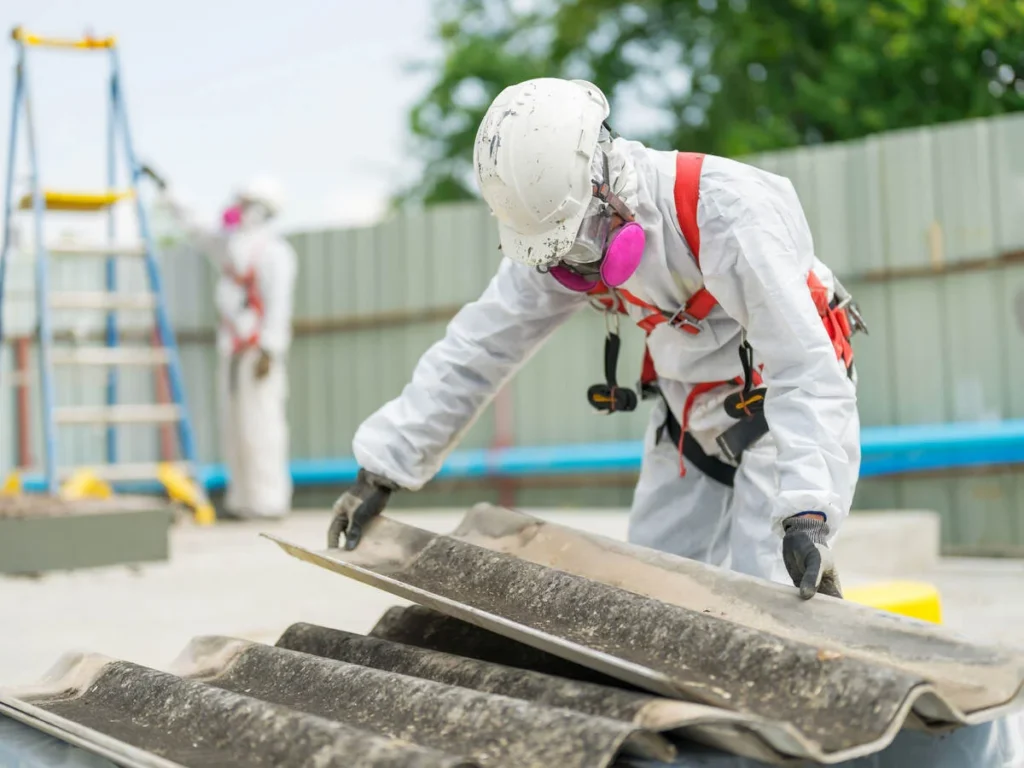Fast, Dependable Results when it Matters the Most
Walls and Plaster – Asbestos In Walls
Worried about asbestos in your plaster or drywall walls? If your Colorado home — especially in areas like Denver, CO — was built before 1985, there’s a high chance it contains hidden asbestos materials, particularly in plaster walls, cement boards, or textured finishes. Asbestos, a mineral known for its fireproofing and strengthening properties, has been a common component of construction materials for decades. In this guide, we’ll delve into key questions such as “is there asbestos in plaster,” “was asbestos used in plaster in 1910,” “was asbestos used in drywall,” “when was asbestos used in plaster walls,” and “was asbestos used in plaster in the 1920s.” Understanding these aspects is crucial for ensuring safety and making informed decisions regarding the management of asbestos-containing materials in buildings. Let’s explore the history, risks, identification, and management of asbestos in walls together.
Asbestos In Walls
Have you ever wondered if your walls could be hiding a silent danger?
The potential presence of asbestos in plaster walls this hazardous substance raises critical questions about the impact on indoor air quality and overall health.
Understanding how asbestos finds its way into wall materials is just the beginning of a journey toward creating a safer environment for all.
Key Takeaways
- Asbestos commonly found in cement and concrete walls for durability and fireproofing.
- Disturbing asbestos in walls can release harmful fibers, posing health risks.
- Visual clues and building age indicate potential asbestos presence in walls.
- Professional inspection recommended for accurate identification and safe management.
Common Uses of Asbestos in Plaster Walls
Asbestos commonly found in cement and concrete walls for durability and fireproofing, including asbestos in plaster walls and drywall. Asbestos was commonly used in plaster walls and drywall to provide these beneficial characteristics. In plaster walls asbestos fibers were added to the plaster mixture to increase its resistance to fire and add strength. This made asbestos a popular choice for construction in the past. Similarly, asbestos was used in drywall to enhance its durability and fireproofing capabilities.
However, it’s crucial to be aware of the potential health risks associated with asbestos exposure, especially when these materials are disturbed through planned renovations, demolitions or unplanned destruction of the property. Identifying and managing asbestos-containing materials in walls is essential to ensure the safety of occupants and workers.
If you’re in Colorado—whether Denver, Boulder, or surrounding areas—EnvioCore’s asbestos inspection team can help you assess plaster walls for hidden asbestos risks.
Identifying Asbestos-Containing Materials

When examining walls for asbestos-containing materials (ACM’s), it’s important to be vigilant for specific indicators, such as plaster walls asbestos. Some visual clues include the texture and appearance of the materials. Asbestos was commonly used in buildings constructed before 1978, when the regulations in the United States began. However, ACM’s are still commonly found in more recent properties due to the lack of regulations for imported materials and because asbestos is a naturally occurring mineral, it has been found mixed into other natural substances.
Areas such as bathrooms and laundry rooms, where waterproofing was essential, may also contain asbestos in sheeting or vinyl tiles, including asbestos in plaster walls. Signs of asbestos can be seen in the form of thin cement sheeting reinforced by asbestos, popcorn ceilings textured like cottage cheese, and repair patches that may contain asbestos joint compounds.
Buildings that have undergone renovations may still harbor asbestos if not properly abated. The only precise way to know if a material contains asbestos is by hiring a certified asbestos inspector to take samples based on protocols and have those samples analyzed at a certified lab, especially in cases of asbestos in plaster walls.
Call Now
You Can Call Us At This Number: 720-399-3335
Risks of Asbestos Exposure in Walls
When assessing the risks of asbestos exposure in walls, it’s crucial to understand the potential dangers associated with the presence of this hazardous material, such as asbestos in plaster walls. Asbestos fibers, when disturbed, can become friable, and thus, airborne and easily inhaled, including asbestos in plaster walls. This can lead to serious health issues such as lung cancer, mesothelioma, and asbestosis.
It is important to note that Asbestos fibers are microscopic and can remain suspended in the air for long periods, thus, increasing the risk of inhalation, particularly with asbestos in plaster walls. Therefore, proper precautions must be taken when dealing with possible ACM’s to minimize exposure. Professional and certified asbestos testing and abatement procedures are recommended to ensure the safety of occupants and workers when handling walls with ACM’s, especially in cases of asbestos in plaster walls.
Proper Handling and Removal Procedures

To ensure safe handling and proper removal of asbestos from walls, it’s essential to follow stringent guidelines and employ certified, trained professionals, especially when dealing with asbestos in plaster walls. The use of personal protective equipment (PPE) such as respirators, gloves, and coveralls to minimize the risk of inhalation or skin contact is imperative, especially with asbestos in plaster walls. Additionally, sealing off the work area and using specialized equipment to contain and remove asbestos-containing materials safely are essential steps in the removal process, particularly with asbestos in plaster walls.
Certified professionals have the expertise and training to safely and efficiently execute asbestos removal (abatement). They’re equipped to assess the extent of asbestos contamination, develop a comprehensive removal plan, and execute the removal while adhering to regulatory requirements, especially when dealing with asbestos in plaster walls.
Frequently Asked Questions
Absolutely, asbestos in walls can significantly impact indoor air quality, posing serious health risks to occupants. When disturbed, asbestos fibers can become airborne, leading to inhalation and potential health issues like lung cancer and mesothelioma. It’s crucial to address any asbestos-containing materials promptly to minimize exposure risks. Professional inspection and proper removal procedures are essential to ensure a safe living environment for all building occupants and workers.
Determining the cost of asbestos removal in a residential or commercial building involves factors like the extent of asbestos, location, type of asbestos-containing materials, and required safety measures. Professional assessment is crucial for accurate cost estimation. Costs may cover asbestos testing, removal, disposal, and any necessary repairs or replacements. Ensuring proper handling by licensed professionals guarantees safety and compliance with regulations. Get detailed quotes to understand the scope of work and associated expenses.
When it comes to detecting asbestos in walls, it’s crucial to prioritize safety. DIY methods for identifying asbestos aren’t recommended due to the health risks involved. Asbestos fibers can be harmful when disturbed, leading to serious health issues, many of which have a latency effect and do not show up until years down the road. Professional inspections by certified experts is the safest approach to accurately detect asbestos in walls. Taking proactive steps to ensure a thorough assessment is key to safeguarding health and well-being.
If asbestos is found in walls, property owners may face legal implications related to health and safety regulations if materials are disturbed and proper protocols are not followed. Asbestos exposure can lead to severe health issues, and property owners have a duty to ensure a safe environment for occupants and workers. Failure to address asbestos properly can result in fines, lawsuits, and potential harm to individuals. Seeking professional help for asbestos removal and following regulations is crucial to avoid legal consequences. It is also ciritical to have a certified asbestos inspection, regardless of the year of the property if any materials will be disturbed. Hired contractors are legally required to adhere to these regulations, and if they don’t please do speak up and advocate to avoid regulatory fines as well as to protect the health of all involved.
When managing asbestos in walls, there are different options to consider:
1. Besides complete removal, options like encapsulation or enclosure exist.
2. Encapsulation involves sealing asbestos-containing materials to prevent fiber release.
3. Enclosure entails covering or isolating the asbestos to prevent exposure.
4. Both methods can reduce asbestos risks without full removal.
Professional assessment is crucial to determine the most suitable approach based on the specific situation.
Asbestos was commonly used in plaster materials in the past for its fireproofing and strengthening properties. Buildings constructed before regulations in 1978 may contain asbestos in plaster.
Yes, asbestos was used in plaster materials around 1910 for its fire-resistant qualities and durability, especially in buildings constructed during that time period.
Asbestos was used in some types of drywall before the 1970s for its fireproofing properties. However, modern drywall typically does not contain asbestos.
Asbestos was commonly used in plaster materials in the early to mid-20th century, particularly before regulations were established in the late 1970s.
Yes, asbestos was commonly used in plaster materials during the 1920s due to its fire-resistant and strengthening properties, especially in construction projects of that era.
Conclusion
In conclusion, it’s imperative to be vigilant in identifying and managing asbestos in walls, particularly in cases of asbestos in plaster walls, to protect individuals from potential health risks. By understanding common uses, recognizing visual clues, and following proper handling procedures, we can ensure the safety of occupants and create healthier living environments, especially when addressing asbestos in plaster walls. Proactive measures and professional inspections play a key role in effectively addressing asbestos concerns, ultimately contributing to safer spaces for all.
We are grateful for the continued education and awareness in recent years regarding ACM’s, including asbestos in plaster walls. This evolution in building standards has helped to minimize serious health complications and has contributed to a healthier living environment for all.

